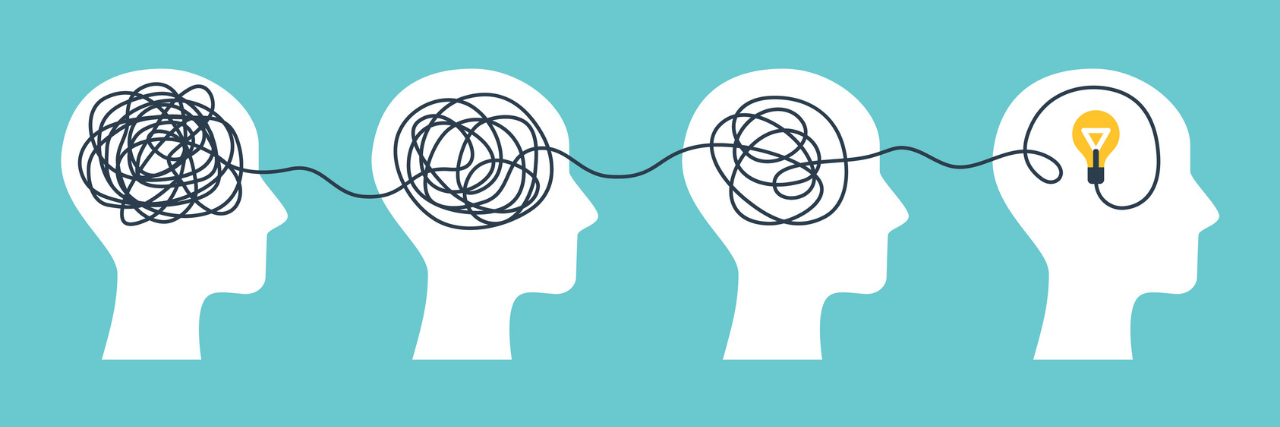3 Treatment Options When Depression Doesn’t Go Away
Editor's Note
Please see a doctor before starting or stopping a medication.
Back in the day, I struggled with treatment-resistant depression. (This was likely due to the fact that what I had was actually bipolar II, but never mind that for now.) My psychiatrist prescribed me medication after medication, but none of them worked, or at least not for long. We got into a seemingly endless spiral of trying one drug, adding another, weaning me off one drug and ramping up another, then another and another.
Some of them just plain didn’t work. Others had intolerable side effects, from vivid, horrible nightmares to making me feel like I was about to jump out of my skin.
All this went on for certainly months — maybe years. (Memory problems were one of the many intolerable side effects.) Eventually, my doctor reached the correct diagnosis, and then there were months of trying medications that were targeted for bipolar disorder instead of plain depression with anxiety. Again, nothing worked, or didn’t work adequately.
Nowadays, there are non-pharmaceutical methods of coping with treatment-resistant depression, including electroconvulsive therapy (ECT), transcranial magnetic stimulation (TMS) and ketamine treatment.
I never had any of these treatments, since my psychiatrist and I finally worked out a drug combo that brought me back to balance, with only minor tweaks in dosage over the years. Nonetheless, I’ve become interested in the alternate means of dealing with treatment-resistant depression, and here’s what I now know. (If you want a patient’s own experience with ECT, TMS and ketamine treatment, look up Kitty Dukakis or read some of the Bloggess’s posts.)
ECT, or electroconvulsive therapy, is what used to be known as shock treatment. For a long time, it went the way of prefrontal lobotomy, stigmatized as a cruel and harmful procedure. The portrayal of ECT in Ken Kesey’s novel, “One Flew Over the Cuckoo’s Nest” and then the movie of the same name were major influences in terrifying the general public, leading to a nearly complete disavowal of its use. It’s making a comeback, though. The theory behind it is electric stimulation of the brain will shock the brain back into normal functioning. The American Psychiatric Association notes it is now performed under anesthesia, with medical personnel attending the procedure. They report improvement in 80% of patients.
ECT is the alternative treatment that I was ready to try when none of the drugs prescribed for me proved effective. Then, my doctor wanted to try one last drug, and that was the one that did the trick.
TMS, or transcranial magnetic simulation, is described by the Mayo Clinic as “a noninvasive procedure that uses magnetic fields to stimulate nerve cells in the brain to improve symptoms of depression.” It’s also called rTMS, or repetitive trranscranial magnetic stimulation, because more than one treatment is generally needed. The theory is the magnetic pulses stimulate areas of the brain involved with mood control and depression. It doesn’t cause seizures or require anesthesia. The exact mechanism of how it works isn’t completely understood, but that’s true of many other treatments for depression, including medications.
Harvard’s Health blog reports rTMS helps about 50% to 60% of people who did not respond to drug treatment, “experience a clinically meaningful response.” They do note treatments, “while encouraging, are not permanent,” which is true of many other forms of treatment.
Ketamine is the newest of the treatments for treatment-resistant depression. Ketamine was once known as a “party drug” called “Special K,” described by the Drug Enforcement Administration (DEA) as “a short-acting anesthetic with hallucinogenic effects.” As a treatment for depression, however, it is thought to “enable brain connections to regrow,” according to scientists at Yale. The American Association of Nurse Anesthesiology (AANA) notes that ketamine “is not a first-line therapy for psychiatric disorders,” but then, neither are ECT and TMS.
Ketamine can be administered via nasal spray, but for psychiatric purposes (including to treat bipolar disorder and post-traumatic stress disorder) it is often given as a series of infusions. An article by doctors at the National Institutes of Health comments ketamine “has a robust and rapid effect on depression, which was seen immediately after the administration of ketamine and sustained at the end of 1 month.” Repeated treatments are generally necessary.
I don’t know about other patients and doctors, but after years of drug therapy not working, I was ready to give almost anything a try. ECT was next on the list, and the only likely alternative, as TMS and ketamine were not available at that time. I’m just glad that now patients and their doctors have more options when depression resists drug treatment and “talk therapy.” And I hope even more alternatives become available for people with depression who are desperate to find a treatment that works for them.
Getty image by kotoffei

